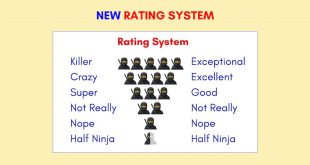WELCOME TO EDITION 746 of GRAPEVINE

Singapore is the most expensive place in the world to own a car.
The same vehicle we pay for easily buys two or three – sometimes four – cars in Europe and most other countries.
Actually, we don’t even own the cars that we “buy”.
When we purchase a car in Singapore – already highly taxed – we need also to buy a “Certificate of Entitlement”.
These COEs run into the tens of thousands Singapore Dollar (S$1.50 to €1 and S$1.35 to US$1). The rates for the different capacity of cars fluctuate.
According to the government, the rates of COEs depend on the bidding done by the public. And is arrived at by adding the lowest and the highest bids and dividing them by two.
I don’t know anyone of my friends ever bidding for a COE. If I were to bid, it would certainly be for 1 cent. This would then ensure that the COE will be as low as possible.
Back to what I said earlier about Singaporeans not actually owning the car we buy.
Come every 10 years – after enjoying a decade of motoring – we need to purchase a new COE for the car that we had originally bought. And thought we owned. But don’t because without a new COE, the car would have to be scrapped.
The Singapore Government is actually the largest car rental company in the world. Actually, they are even smarter than car rental companies because they rent out cars without having to buy them in the first place. They give the customers the privilege of buying the cars that they are about to rent.
Let’s Be Fair
In many parts of Singapore – at different times of the day except Sunday – cars, trucks and buses have to pay to cross a stretch of road. This is the ERP or Electronic Road Pricing system.
Some Singaporeans refer to it as “Everyday Rob People”.
Last Thursday, I went through one of them. It cost me S$3.
The idea of the ERP system is that if you pay, there should be less traffic in those areas where the levy kicks in.
Instead, on September 19th, not long after being zapped for S$3, I drove into a jam.
Together with several hundreds of motorists, we were being diverted because the road in front of us was blocked off as it was part of the Formula 1 circuit.
I sat there in my car wondering if the people at the LTA or Land Transport Authority had any sense of fairplay.
They would have known long ago when the F1 was going to be run and on which days roads around the circuit would be affected. Can’t they lift the ERPs on those roads?
It would only be fair. Civil servants’ jobs are to serve the public, not punish them.
When the ERP system was first introduced about 35 years ago, the idea was to regulate the smooth flow of traffic before and after office hours. The stated goals were also to encourage people to carpool and to use public transport. So while cars were levied charges for entering the CBD or Central Business District, if you had four or more people in the car, there would be no charge. And the system only – then – applied Monday to Friday.
Gradually, ERP stretched beyond the CDB and also into the afternoon instead of just before and after office hours. It now also applies on Saturday.
So much for the original motivations. ERP seems to have become a revenue source. The rest of us try and chart our lives by the truth aiming, as Shakespeare noted, to be as constant as the Northern Star.
Politicians have a way of rearranging the truth.
The F1 cars that whirl round the circuit in the heart of the CBD in tonight’s F1 finale, they don’t have to pay ERP nor COE to drive on the streets of Singapore.
Wishing you A Very Good Week Ahead.
![]()


